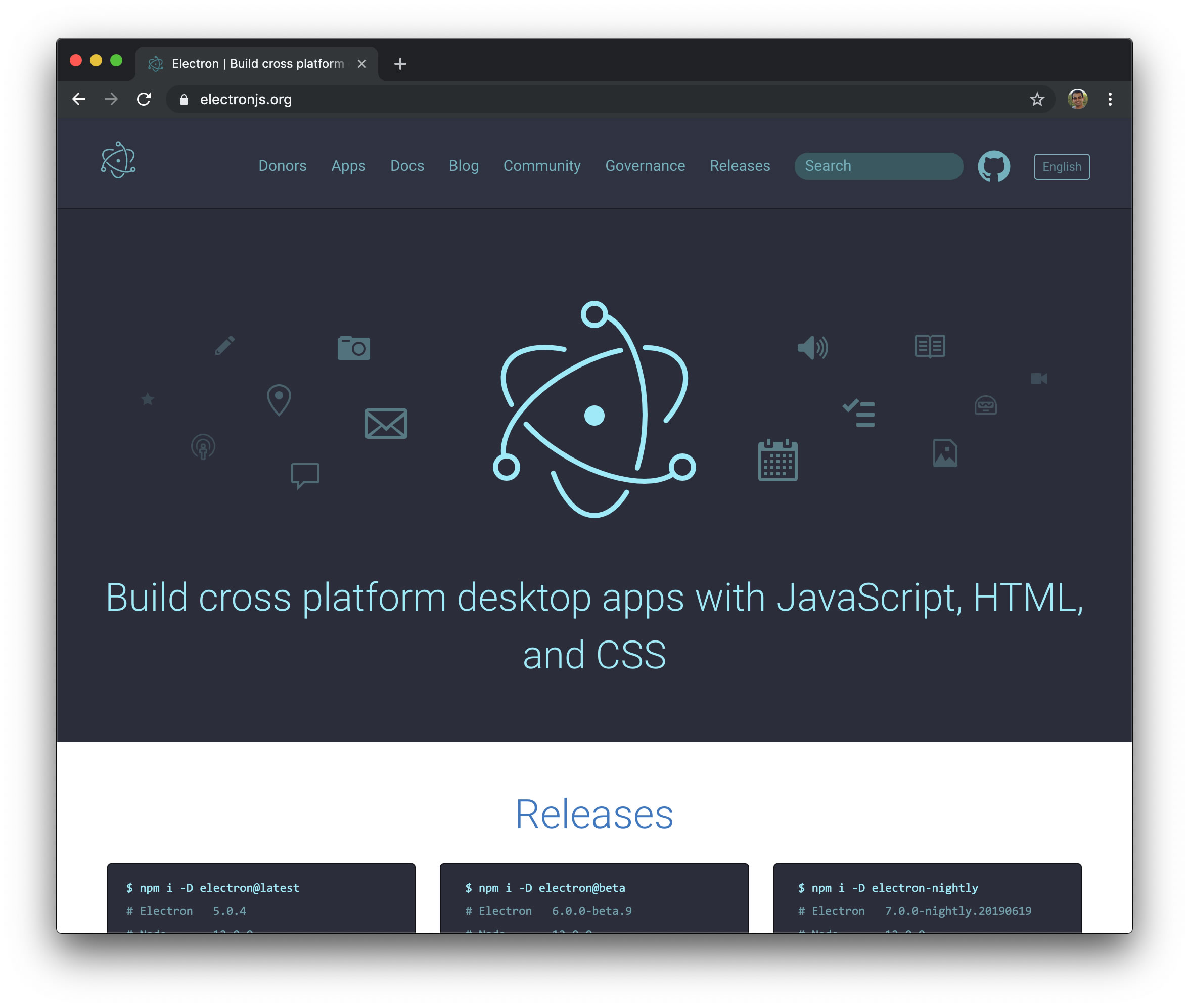
You can find the full repo for this example here.
#ELECTRON API TUTORIAL HOW TO#
While this may have been a bit of a lengthy process, I hope that you found this helpful in understanding the fundamentals of building your own desktop apps using Electron. This tutorial will demonstrate how to make HTTP REST API calls in Electron using the net module and the advantages and features of the net module. The app includes helpful tutorials for taking screenshots, communicating between processes, using native menus, using system dialogs, and many others. In your OS’s folder you can find your new application ready to run natively on your machine. Electron APIs includes tutorials, code snippets, and interactive examples for building cross platform desktop apps using JavaScript, HTML, and CSS with Electron.

The entry point of any Electron application is its main script.

Electron apps follow the same general structure as other Node.js projects. When they’re all in the correct locations you can just run their script from our package.json file and a new release-builds folder should be created. Create your application Scaffold the project. I recommend using Cloud Convert to do this. You also need to know about a few native Node.js APIs such as file handling, processes, etc. Prerequisites Before proceeding with this tutorial, you should have a basic understanding of Javascript (ES6) and HTML.

icns for Mac and Linux and ico for Windows. This tutorial is designed for those learners who aspire to build cross-platform Desktop apps for Linux, Windows and MacOS. When browsing through examples in our tutorials, youll frequently see an 'Open in Electron Fiddle' button underneath a code block. Script.js const electron = require ( 'electron' ) const ) Bundlingīefore we can bundle our new app we need some icons to go with it, but they need to be in the right formats for their operating system.


 0 kommentar(er)
0 kommentar(er)
